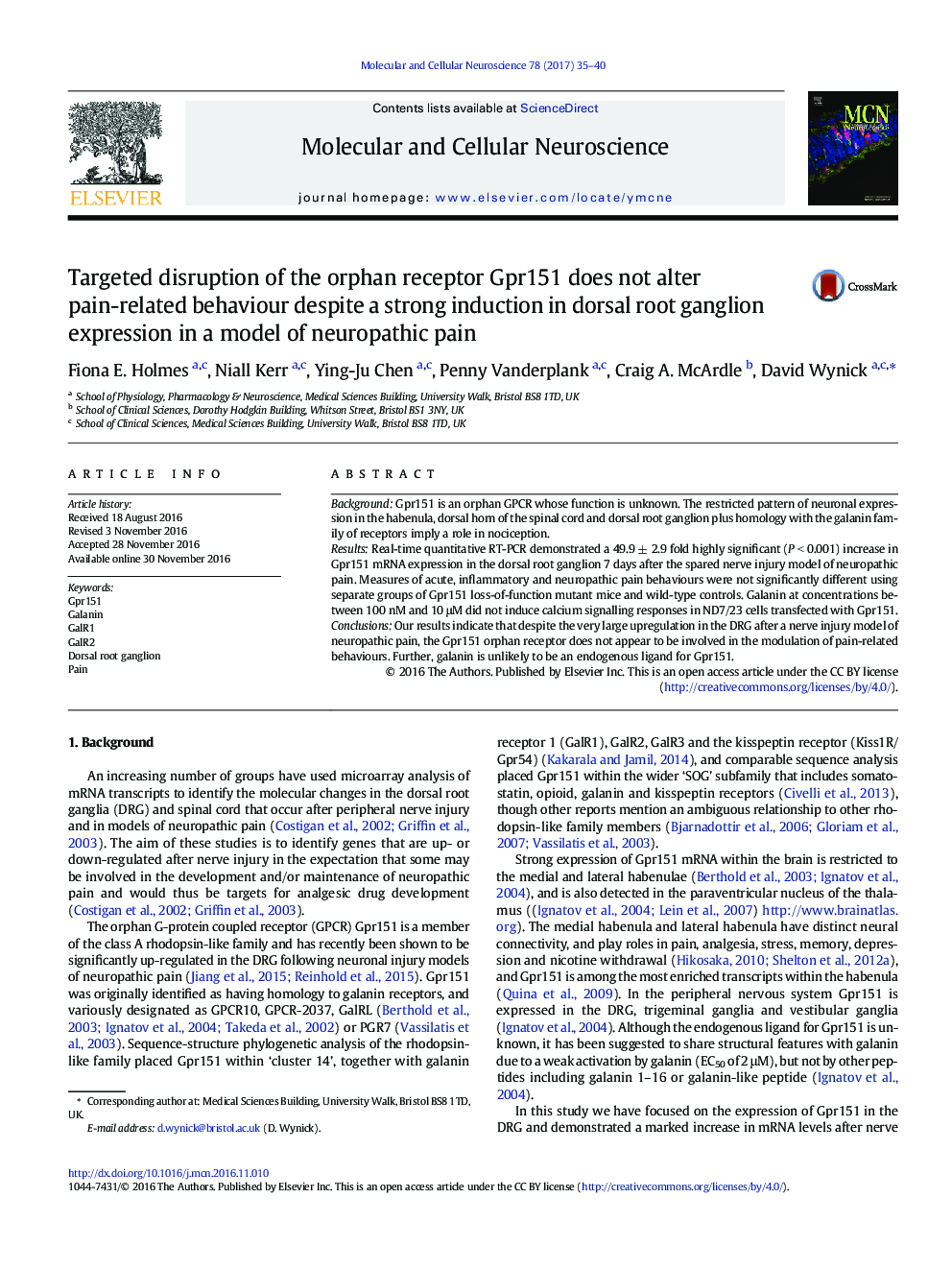| Article ID | Journal | Published Year | Pages | File Type |
|---|---|---|---|---|
| 5534445 | Molecular and Cellular Neuroscience | 2017 | 6 Pages |
â¢Gpr151 is an orphan GPCR of unknown function.â¢RT-PCR demonstrated a 50-fold increase in Gpr151 mRNA in the DRG 7 days after a nerve injury model of neuropathic pain.â¢Acute, inflammatory and neuropathic pain behaviours were unchanged between Gpr151 mutant mice and wild-type controls.â¢Galanin did not induce calcium signalling responses in ND7/23 cells transfected with Gpr151.
BackgroundGpr151 is an orphan GPCR whose function is unknown. The restricted pattern of neuronal expression in the habenula, dorsal horn of the spinal cord and dorsal root ganglion plus homology with the galanin family of receptors imply a role in nociception.ResultsReal-time quantitative RT-PCR demonstrated a 49.9 ± 2.9 fold highly significant (P < 0.001) increase in Gpr151 mRNA expression in the dorsal root ganglion 7 days after the spared nerve injury model of neuropathic pain. Measures of acute, inflammatory and neuropathic pain behaviours were not significantly different using separate groups of Gpr151 loss-of-function mutant mice and wild-type controls. Galanin at concentrations between 100 nM and 10 μM did not induce calcium signalling responses in ND7/23 cells transfected with Gpr151.ConclusionsOur results indicate that despite the very large upregulation in the DRG after a nerve injury model of neuropathic pain, the Gpr151 orphan receptor does not appear to be involved in the modulation of pain-related behaviours. Further, galanin is unlikely to be an endogenous ligand for Gpr151.
